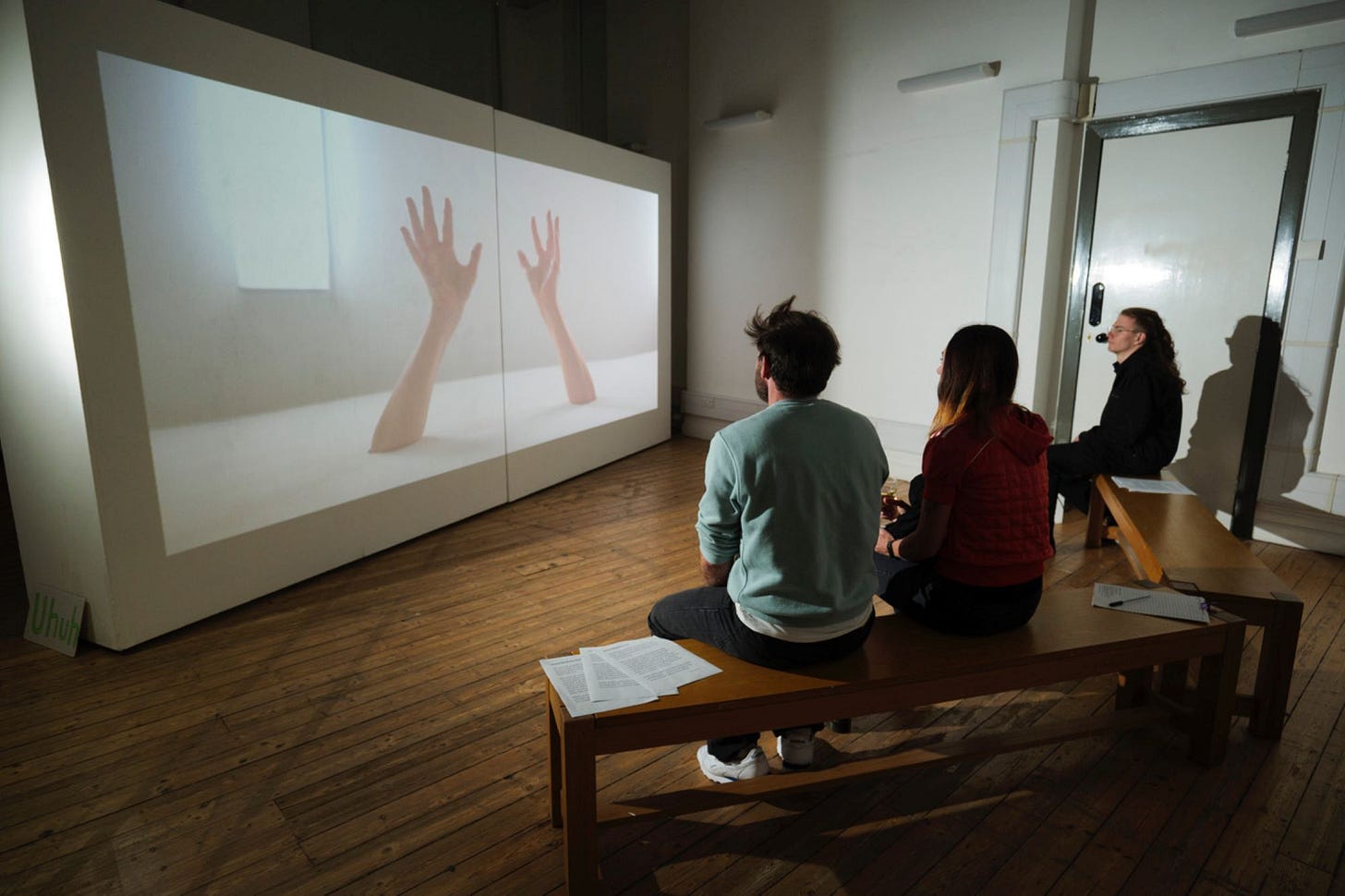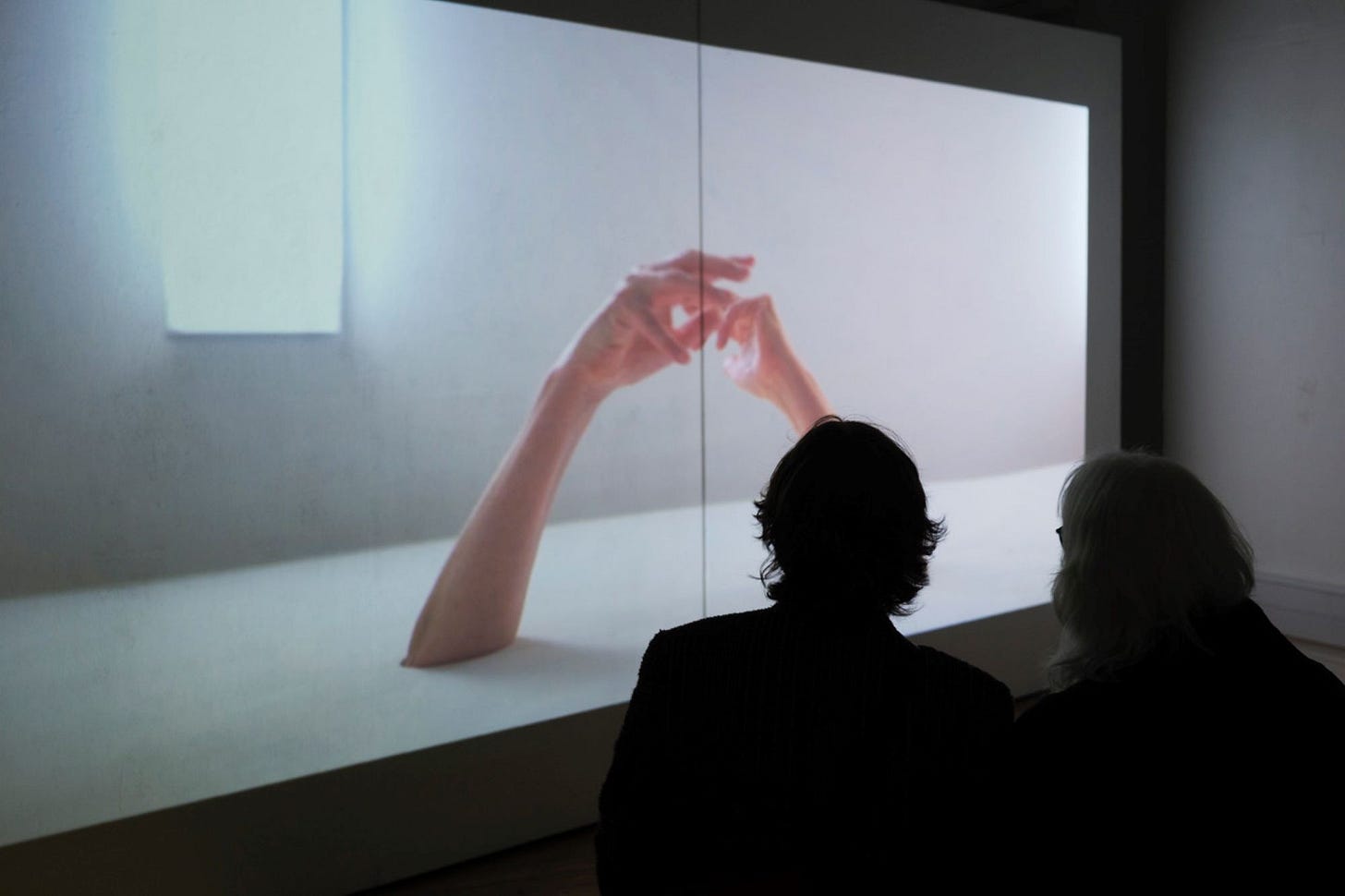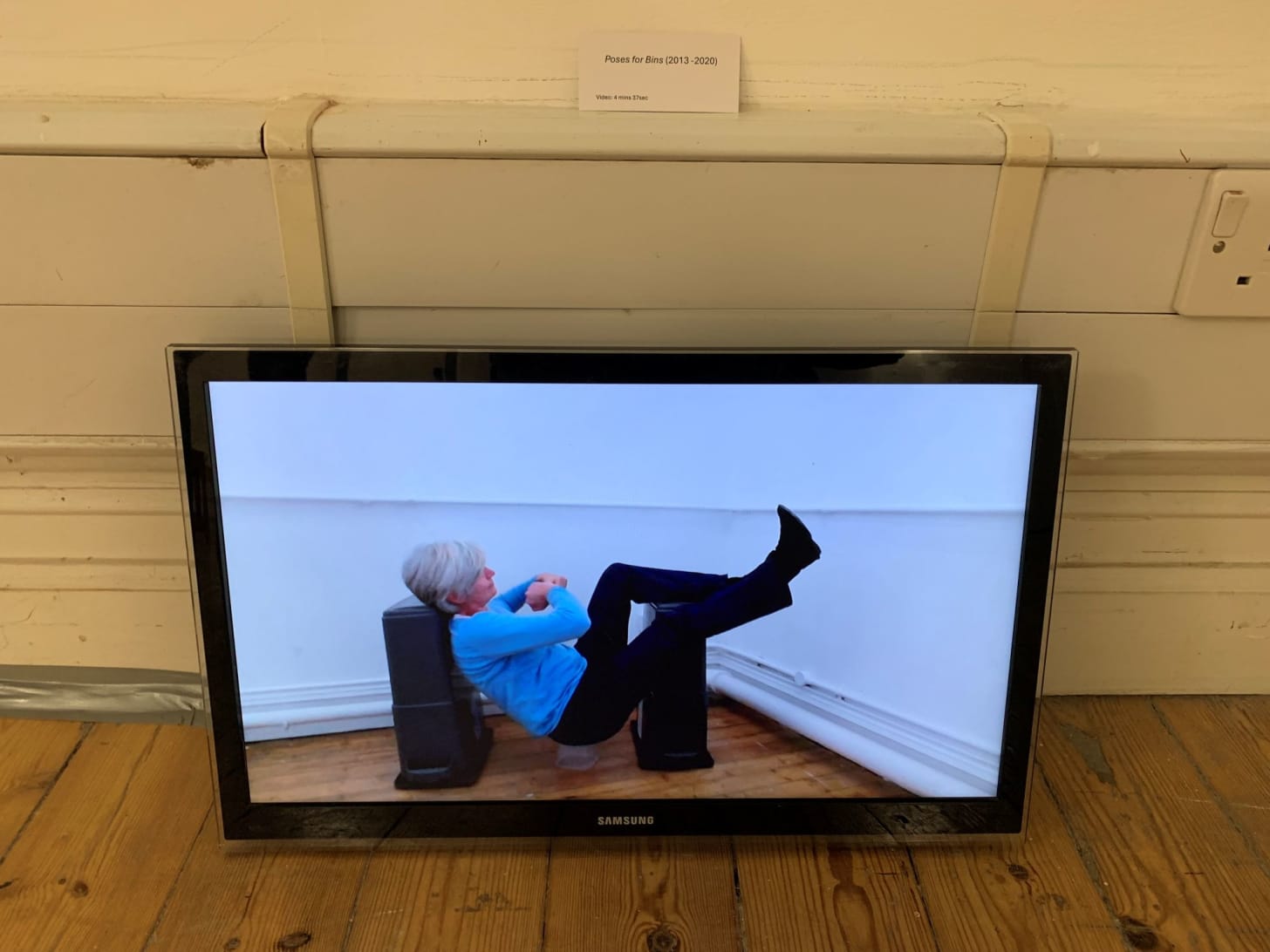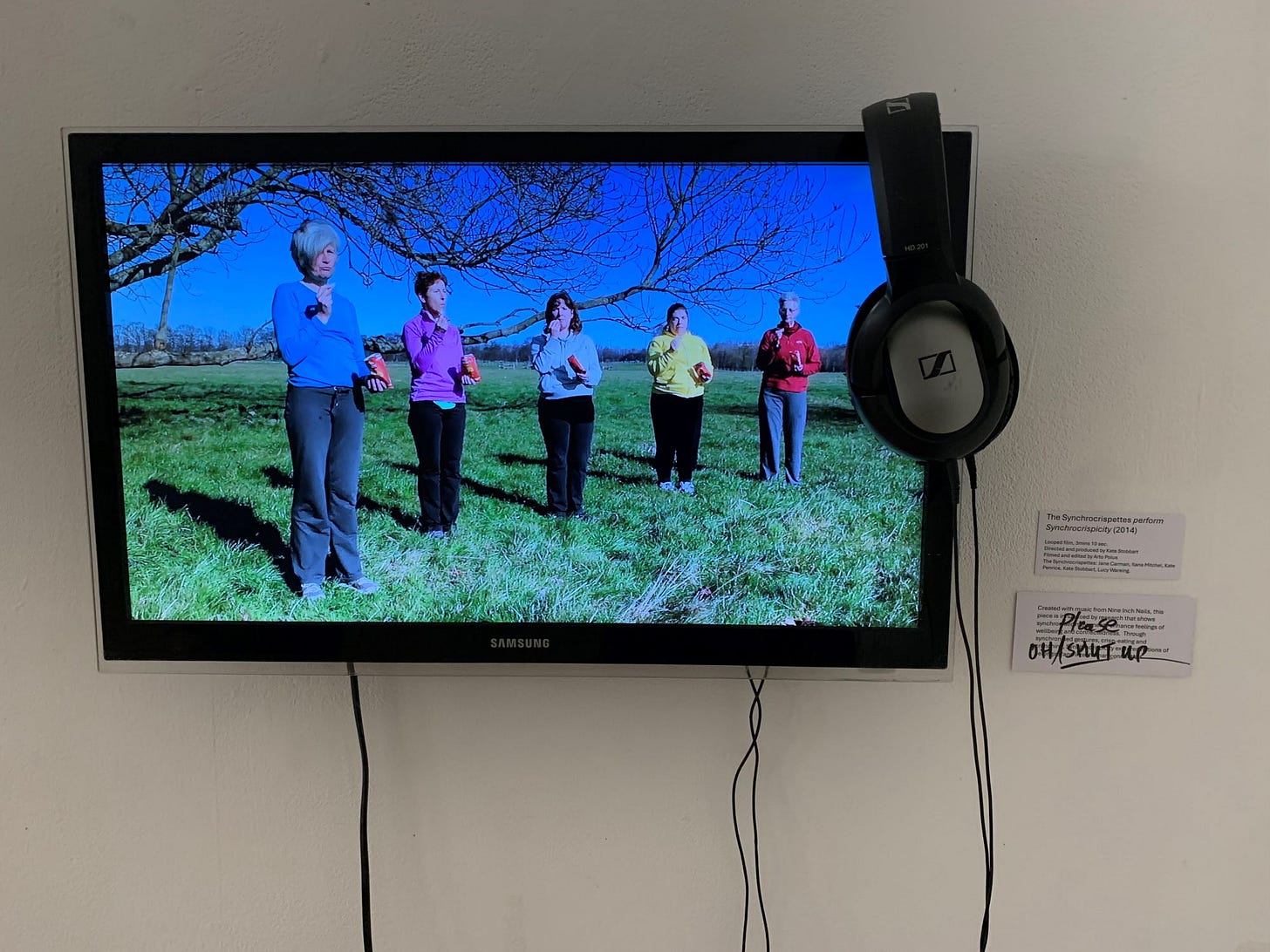Kate, er, handed exhibition opportunity five years on
Um... just what the doctor ordered
Artist Kate Stobbart, who lives in Newcastle, doesn’t confine herself to a single creative niche.
“I basically do anything,” she says. “This stuff happens to be mainly videos but quite often I’ll make sculptures or do something live.”
That can be verified with a Google search of her artistic practice which proves to have been wide-ranging and quite adventurous.
In 2007 she sat against a wall in Krakow wearing a top that exactly matched the brickwork behind her. That was for Brick Clothes.
That same year, for Metro Clothes, she journeyed between Newcastle and Tynemouth clad in material identical to the Metro seat upholstery.
Photographs taken of her suggest nobody batted an eyelid. But perhaps her disguise was so effective she went unnoticed.
In 2009, for a group exhibition at Allenheads Contemporary Art, she found some dead moles strung up on a farmer’s fence and made pretty little flowered dresses for them to wear.
But the ‘stuff’ she refers to in the XL Gallery is the substance of her latest exhibition which has been quite a long time coming.
She says she had the space at Newcastle University (it’s also known as the Ex Libris Gallery and you’ll find it near the Hatton) allocated to her for early in 2020 but we all know what happened.
Covid put paid to what was to have been the crowning moment of her practice-led PhD in fine art – and while it also banished many of us from our workplaces, it was a call to action for Kate who is now a doctor twice over.
Whether that makes her Dr Dr Stobbart I wouldn’t know, but she is similarly qualified in what some might regard as disparate disciplines – although this exhibition hints at some overlap.
Kate studied medicine first, she says, because she’d always wanted to be a doctor – but equally she’d also always liked art.
“I never did art O level but about 20 years ago I started painting more and somebody saw my work and said I could probably get on a course.
“I applied and got accepted here. I went on and did a BA (Bachelor of Arts, 2008, first class honours), and MFA (Master of Fine Art, 2011, distinction) and then the PhD.
“But I got cut off a bit from the art during Covid and went down a tunnel of medicine.
“It has taken me a while to get round to showing this work.”
Having retired as a GP last year, she emailed the university at the beginning of this to ask if she could finish what she’d started.
“I pointed out I’d never had the chance to exhibit my work and they gave me this space, although it does feel a bit weird being five years on.”
The exhibition comprises a handful of video works, the biggest of which does indeed focus on hands, and some text-based paintings featuring expressions of hesitancy, including ‘Um’. ‘Er’ and ‘Uhuh’.
She’s not being flippant calling these creations paintings, she says. They’re among her favourites. Nor is she when listing rejections alongside acceptances (for exhibitions and projects) on her CV.
“Honestly, I’ve always done that. It gets on my nerves sometimes, this putting forward a confident, positive attitude all the time.
“I think it’s why I do the ‘ums’ and ‘ers’. Within a medical consultation, if people hesitate that’s often the most significant thing and yet in a university setting you’re told, ‘Can you not write it up more confidently?’
“Why do we have to do that? There are benefits in hesitation. I did put my hesitations into my PhD writing and I’ve always put the rejections on my CV.”
She hesitates: “…I’m not sure it works.”
What does work is her exhibition, called – with tongue perhaps in cheek – Without a Doubt.
Dominating the space is a video she completed in 2018 whose title, Hand Gesture Film, describes it perfectly.
It shows a pair of apparently disembodied forearms engaging in silent gestural discourse.
When Kate states that her exhibition “explores how everyday communication is shaped by pauses, gestures, hesitations and fragments of conversation that connect or separate us”, it’s encapsulated perfectly in this piece.
Running on a loop, it’s more than an hour of footage edited down to 22 minutes.
She explains: “I did over 50 filmed conversations with people and then selected some of them on a slightly random basis, so the piece moves from one person to the next.”
The forearms and hands are hers, inserted through holes and filmed from below, their movements guided by directions she had recorded and was hearing through earphones.
“People knew they were being filmed, although they didn’t know I was focusing on their hands because that might have made them self-conscious.
“I then copied their gestures and wrote things like ‘Put your thumb and index fingers together and then move your hand to the right…’ so it was a bit like a musical score.”
The conversations, she says, were “quite banal”, nothing to provoke wild gesticulation. But she was pleased with what she got.
“I find hand gestures quite amazing. We use them all the time and they’re a huge part of the way we communicate.”
I wonder if they were useful in the GP’s surgery for making a diagnosis.
Not really, she says: “But you develop an eye for what’s happening on the periphery.
“In medicine the bit I always loved the most was the inter-personal communication and a lot of this work was informed by aspects of that.”
Among the other videos on display is Poses for Bins, Kate’s homage to a 1971 work by the artist Bruce McLean called Poses for Plinths. He had himself photographed posing awkwardly on parts of sculptural plinths; she did the same on bins.
Another video shows a group called The Synchrocrispettes performing Synchrocrispicity - essentially Kate and four other women eating crisps in a rural setting. Through headphones you can listen to a Nine Inch Nails number as you watch.
Kate’s synchronised crisp eating band made its public debut at the old Star & Shadow Cinema in Newcastle back in 2014. Alas, there was no subsequent demand for an arena tour.
But there is likely to be more from Kate Stobbart. While the creative spark might have dimmed during the pandemic, she feels “the switch has turned on again – so I will be able to devote more time to my art”.
Recently, although they’re yet to enter the public domain, she has been painting snippets of overheard mobile phone conversations onto postcards.
Kate’s Without a Doubt can be seen in the XL Gallery, Newcastle University, until Friday, October 10 (the gallery opens Monday to Saturday, 10am to 5pm).







